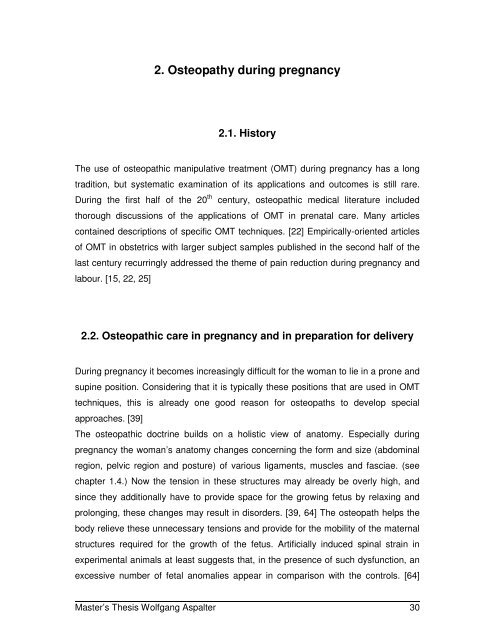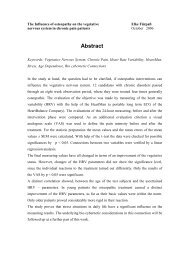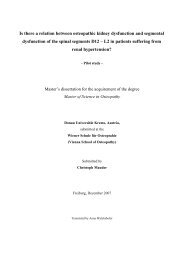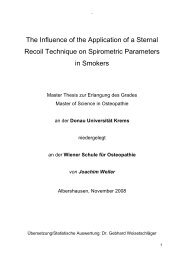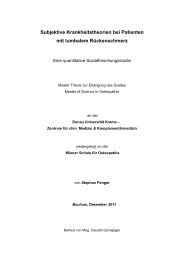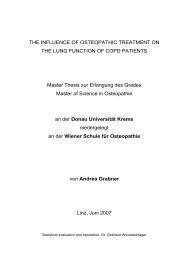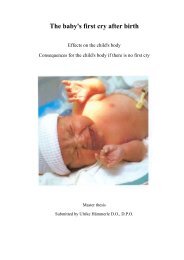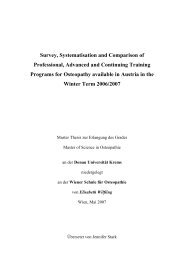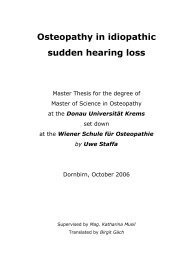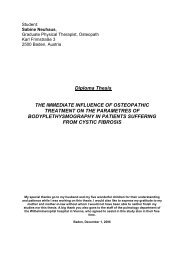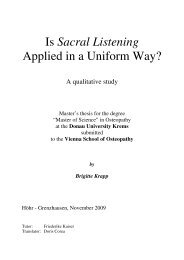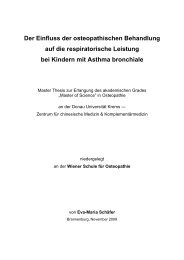Can back pain caused by symptom-giving sacroiliac joint relaxation ...
Can back pain caused by symptom-giving sacroiliac joint relaxation ...
Can back pain caused by symptom-giving sacroiliac joint relaxation ...
Create successful ePaper yourself
Turn your PDF publications into a flip-book with our unique Google optimized e-Paper software.
2. Osteopathy during pregnancy<br />
2.1. History<br />
The use of osteopathic manipulative treatment (OMT) during pregnancy has a long<br />
tradition, but systematic examination of its applications and outcomes is still rare.<br />
During the first half of the 20 th century, osteopathic medical literature included<br />
thorough discussions of the applications of OMT in prenatal care. Many articles<br />
contained descriptions of specific OMT techniques. [22] Empirically-oriented articles<br />
of OMT in obstetrics with larger subject samples published in the second half of the<br />
last century recurringly addressed the theme of <strong>pain</strong> reduction during pregnancy and<br />
labour. [15, 22, 25]<br />
2.2. Osteopathic care in pregnancy and in preparation for delivery<br />
During pregnancy it becomes increasingly difficult for the woman to lie in a prone and<br />
supine position. Considering that it is typically these positions that are used in OMT<br />
techniques, this is already one good reason for osteopaths to develop special<br />
approaches. [39]<br />
The osteopathic doctrine builds on a holistic view of anatomy. Especially during<br />
pregnancy the woman’s anatomy changes concerning the form and size (abdominal<br />
region, pelvic region and posture) of various ligaments, muscles and fasciae. (see<br />
chapter 1.4.) Now the tension in these structures may already be overly high, and<br />
since they additionally have to provide space for the growing fetus <strong>by</strong> relaxing and<br />
prolonging, these changes may result in disorders. [39, 64] The osteopath helps the<br />
body relieve these unnecessary tensions and provide for the mobility of the maternal<br />
structures required for the growth of the fetus. Artificially induced spinal strain in<br />
experimental animals at least suggests that, in the presence of such dysfunction, an<br />
excessive number of fetal anomalies appear in comparison with the controls. [64]<br />
Master’s Thesis Wolfgang Aspalter 30


